For more than 30 years, esteemed decorator Bunny Williams has been tending to her gardens at her country estate in Falls Village, CT, with her husband, John Rosselli. And she shows no signs of stopping. “I am not able to work in my garden every day, but I am constantly thinking about it,” she tells us. For the renowned tastemaker, it’s a labor of love that yields endless joy and bountiful rewards all through the year—whether it’s planning the color scheme for her parterre in the dead of winter, deadheading, weeding, reviving plants in the greenhouse, or simply snipping lilacs and sunflowers in spring and summer.
But believe it or not, Bunny did not always have her green thumb. She learned it. “I am a self-educated gardener, as most of us are,” she says, though she grew up with a mother who loved to garden, grew all kinds of vegetables, and had a cutting garden for flowers. “In the 30-some years since I made my first little garden, it has been a constant source of pleasure to curl up with garden books, to visit public gardens around the world, to seek out-of-the-way private gardens, and to learn from the people who create and maintain both great and small ones,” she says. It’s that perennial curiosity that has fueled her lush, lavish gardens, which she’s beautifully documented in her book An Affair with a House. Come take a stroll with us in her wonderful and whimsical gardens and cull some of Bunny’s best-kept garden secrets and inspirations.
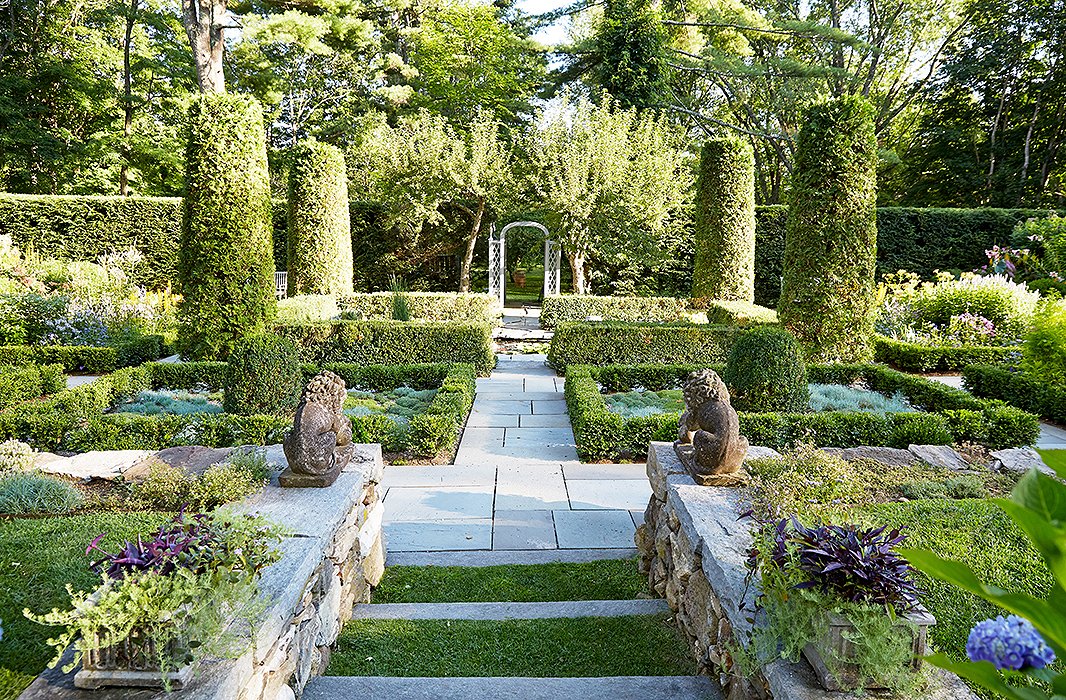
“This is the garden that John and I see from the porch,” says Bunny of the sunken garden, which is anchored with a koi pond. “I had a stone wall built to terrace the land. You have the sensation of moving from one space to another as you walk down the six big, wide steps that lead to the garden.”
#1: Start with Symmetry in Mind
Bunny’s gardens are laid out in the same manner as her impeccable interiors, with scale, balance, and a sense of intimacy. For the garden just beyond the main house, it meant leaning into classical symmetry—matching boxwood terraces and towering hedges, pairs of ornamental sculptures—to create the feeling of an enveloping outdoor room. “The koi pond in the center surrounded by a flagstaff terrace creates the sense of an intimate garden room,” explains Bunny. “Ornaments can bring your eye up from the ground to help you experience a space better and give focus to a garden. Two ornaments placed for classical symmetry will always formalize a setting. Great design, wonderful plant material, and delightful ornaments: A garden becomes a work of art when these three elements are at play.”
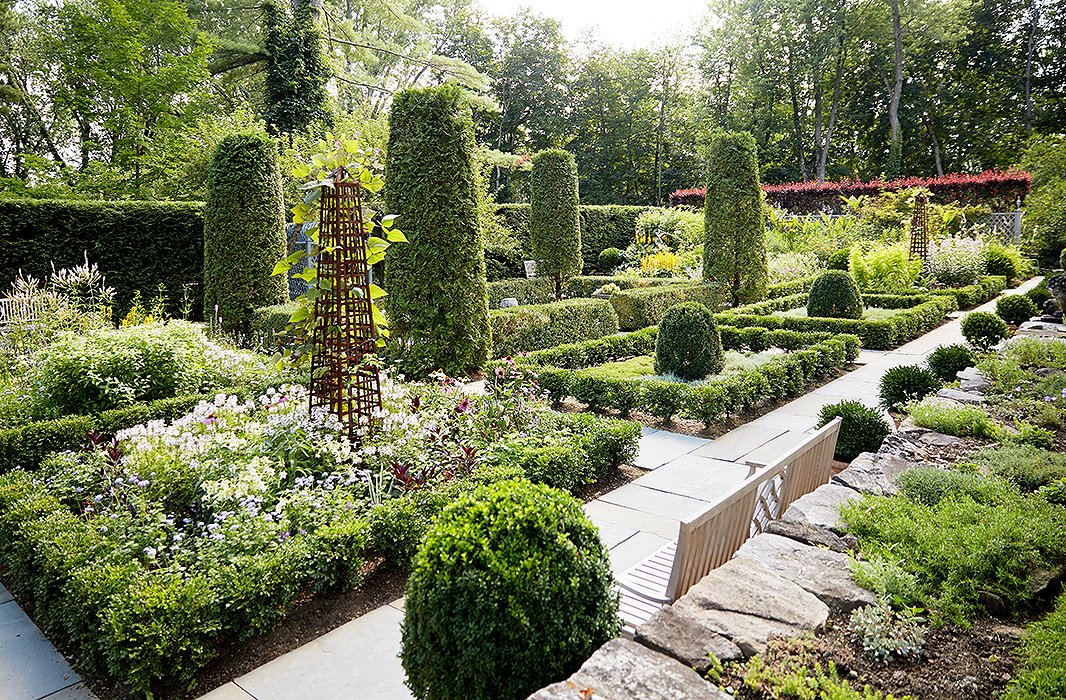
“I was inspired to make recent changes to this garden after visiting an English-style garden in Normandy created by the late, great landscape designer Russell Page,” says Bunny.

Manicured rows of terracotta planters line the stone paths, while a pair of antique ornamental garden lions stand guard.
#2: Consider Your Garden View
When you’re starting to plant a garden, it’s tempting to immediately fill it with perennials and flower beds. Bunny had the same initial impulse but soon realized patience and an understanding of perspective came first. “You have to consider views and the relationships between spaces and make a plan that works for the whole site,” writes Bunny in An Affair with a House. “Initially, I planted delicate coral bells and other little flowers. But this is the garden John and I see from the screened porch, and those were too small to register from a distance. I switched to plants with leaves the size of platters.”

This carved wooden garden bench is one of four that line the walkways framing the sunken garden, which lies just beyond one of the home’s screened-in porches.

I don’t think there’s anything more joyous than getting up at 6:00 a.m. with the birds and going out to look at the garden in the softness of the early morning air, with the dogs running about.

Bunny and John’s bedroom on the second floor overlooks the stone terrace and loggia. “One of my favorite views of the house is from the porch right off our bedroom,” Bunny writes.
#3. Bring Out Indoor Comforts
A handful of outdoor spaces echo inviting elements found in the screened-in porch, where Bunny and John spend much of their time. The stone terrace just below Bunny and John’s bedroom is one such space. It had previously been planted with boxwoods and shrubs that hugged the porch. In a move that maximizes comfort, Bunny turned it into an outdoor living room resplendent with indoor luxuries, such as sumptuous chairs and two sofas of her own design. As she did in her screened-in porch, she used green upholstery fabrics, which “lead the eye out to the garden beyond,” as she notes in her book. Bunny then arranged clusters of terracotta pots: “I use a lot of pots and containers because I think they add so much to every nook and cranny of a garden,” she writes.
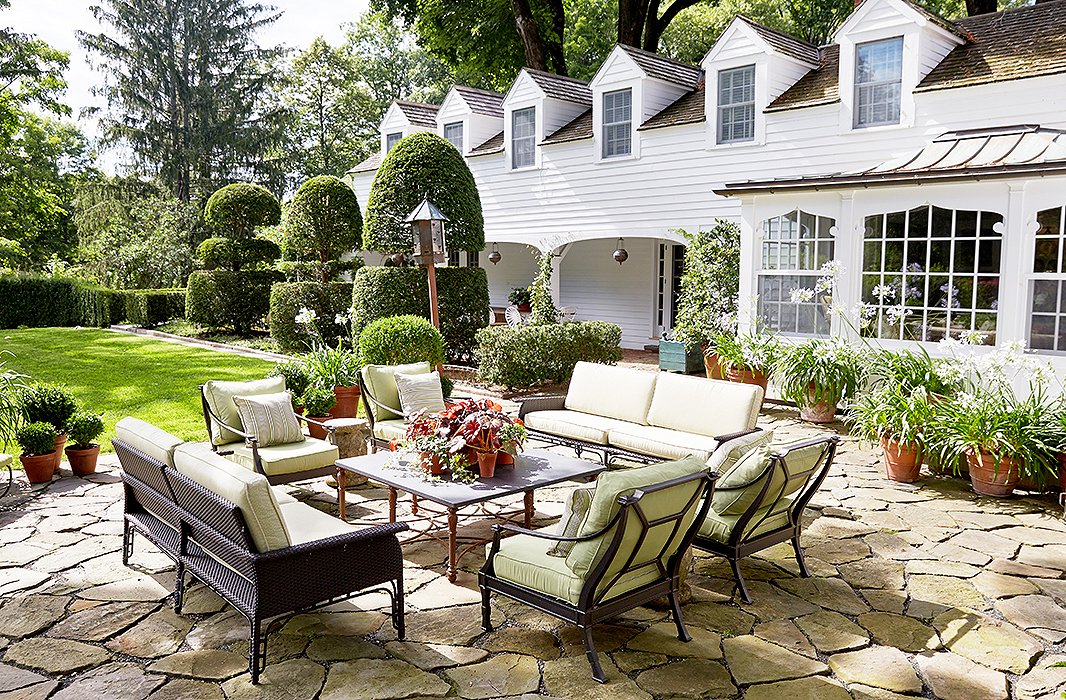
A stone terrace just off the main house was transformed into an outdoor room with comfy sofas designed by Bunny along with chairs in matching cushions. Groupings of terracotta planters help round out a lush, lived-in ambience. The tall topiary yews date to 1910.

Great design, wonderful plant material, and delightful ornaments: A garden becomes a work of art when these three elements are at play.
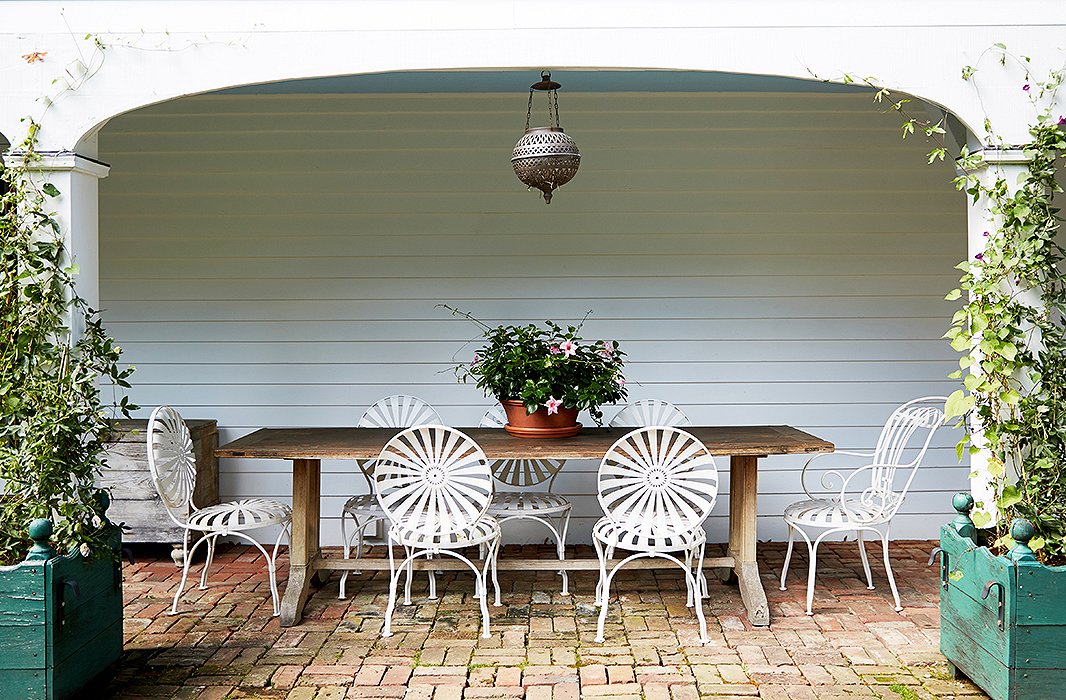
The multiple porches surrounding Bunny’s country home recall her childhood days. She spent many humid afternoons with friends and family lounging on porches. This arched loggia was once a spot for carriages.
#4: Add Furniture with Flourish
Next to wild nature, designs with weight and pieces sporting sculptural appeal are often the perfect addition. Case in point: In Bunny’s loggia, once a parking spot for carriages, cutout metal dining chairs made in France, a hefty trestle table, and two Gothic-style consoles stand in perfect harmony with crawling vines, overflowing pots, and big leafy branches. They have just the flourish to keep up with their lush surroundings.
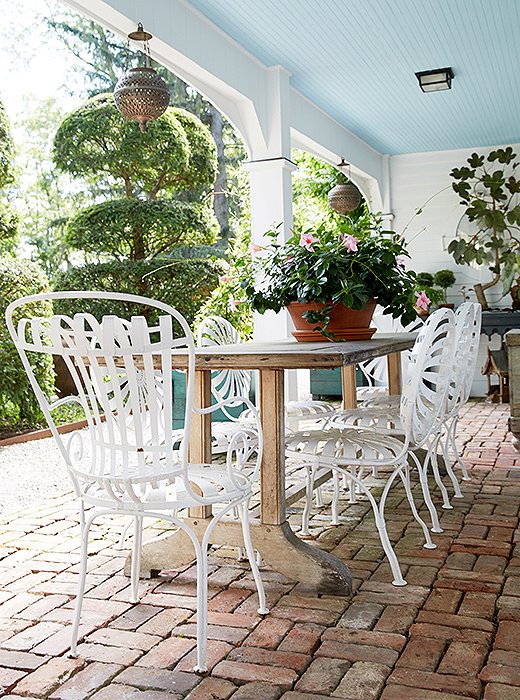
A perfectly shaded spot for Bunny’s summer lunches, the loggia is canopied by a painted-blue ceiling in true Southern style. The metal dining chairs around the wooden trestle table are French.
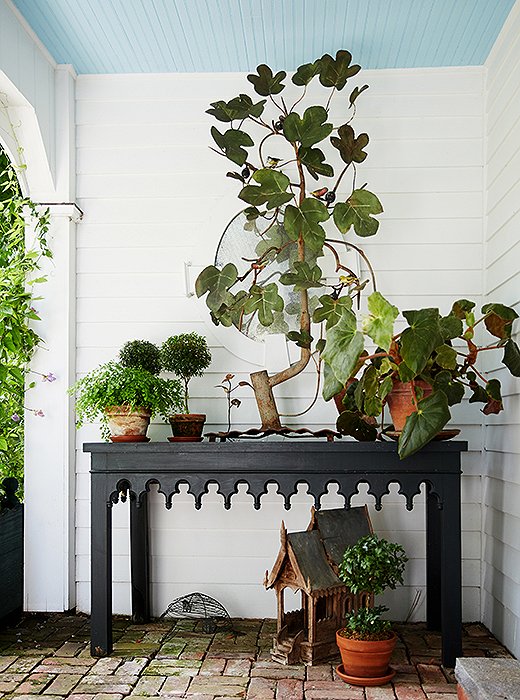
Gothic-style tables bookend the loggia, holding special plants, small topiaries, and vintage garden accents.
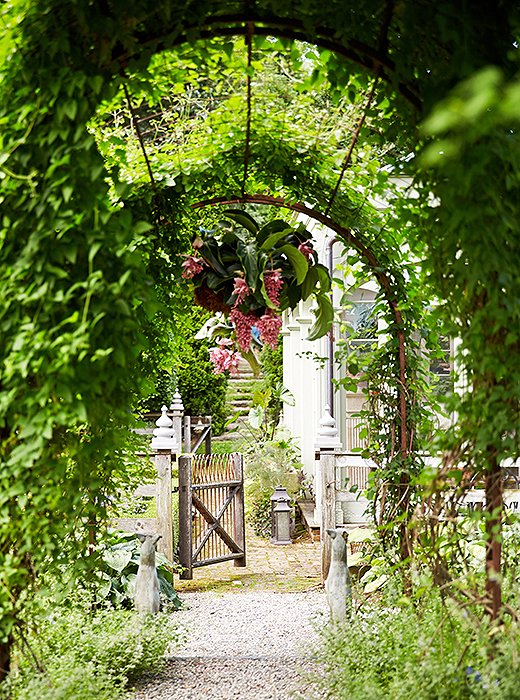
Metal archways entwined with ivy, other vines, and sweet blooms add architectural beauty to the meandering garden paths throughout.

Growing up, we had an old apple orchard with two acres of daffodils underneath that would be just magnificent in spring. I used to go out and play among them and gather up big handfuls for bouquets. I’m sure I wasn’t thinking, ‘Oh, I’ll grow up to be a gardener.’ It just became a natural part of who I am.
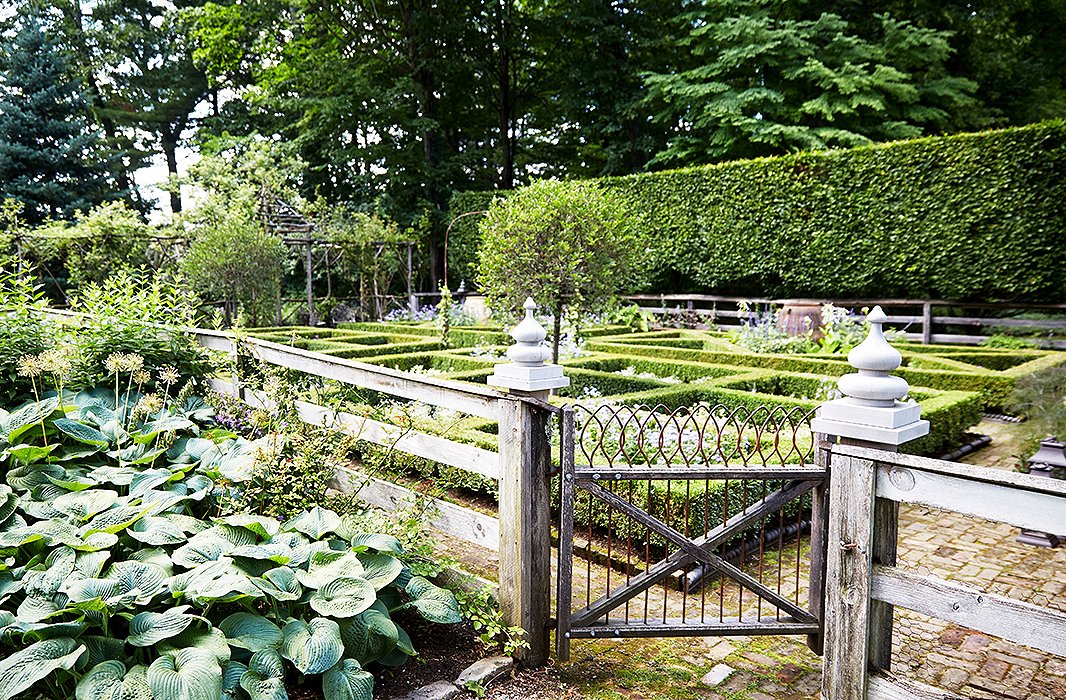
Bunny’s formal garden, lined with 12-foot-high hornbeam hedges, is ever-changing, with new combinations of colorful blooms planted each year. Planning begins in winter, when she and John sketch it all out.
#5: Create Some Structure for Planting
“Structure is most important,” says Bunny of planting a garden. That philosophy is most evident in her formal parterre, where neat boxwoods are laid out in ornamental diamonds and squares, almost like picture frames for the flowers within. It’s within these boxwood frameworks that she plants blooms in new color schemes each year. “Flowers come and go, but hedges look good all year long,” she says, pointing out the need to start with a foundation of hardy greenery. She’s also alluding to the hornbeam hedge, lining one side of the garden, which has grown 12 feet high and “retains its leaves in winter and looks beautiful laden with snow,” she writes.
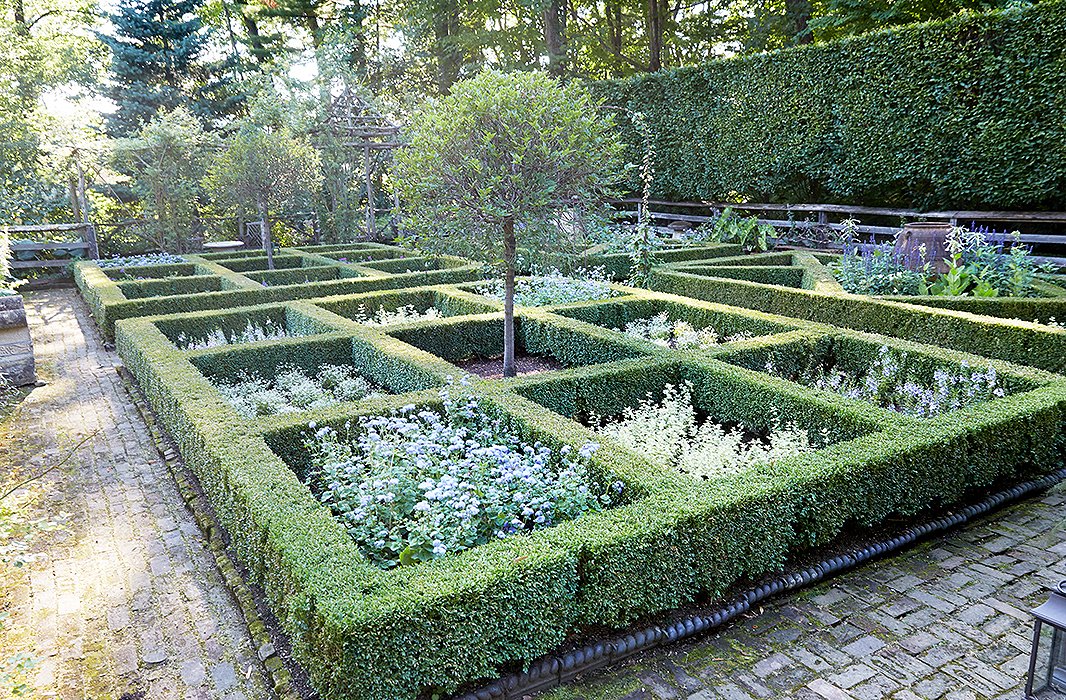
Bunny planted boxwoods in ornamental squares and diamonds for her parterre. She was inspired by the famed English gardener and writer Rosemary Verey, whose kitchen gardens took after classic French potagers.
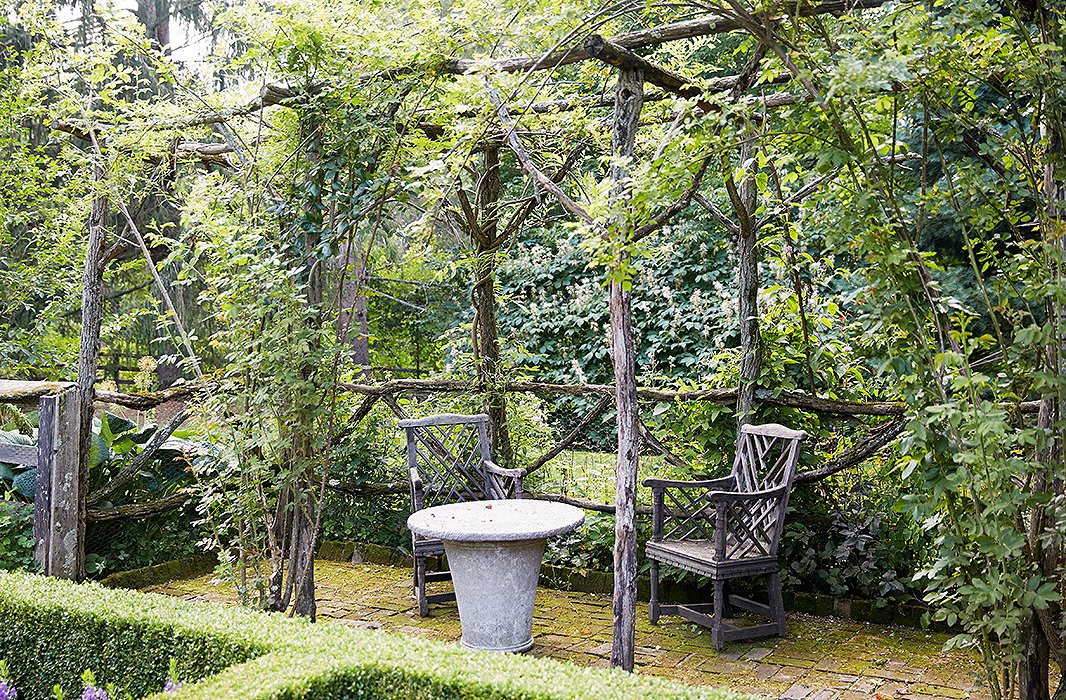
Antique chairs and a stone table beneath a rustic pergola, made from locust saplings that had been cut down, provide a quiet resting spot in the formal garden.

Gardening is all about cultivating the senses—the palette of colors, the scent of the flowers, planting for songbirds. It’s the closest I can come to creating peace and solitude.
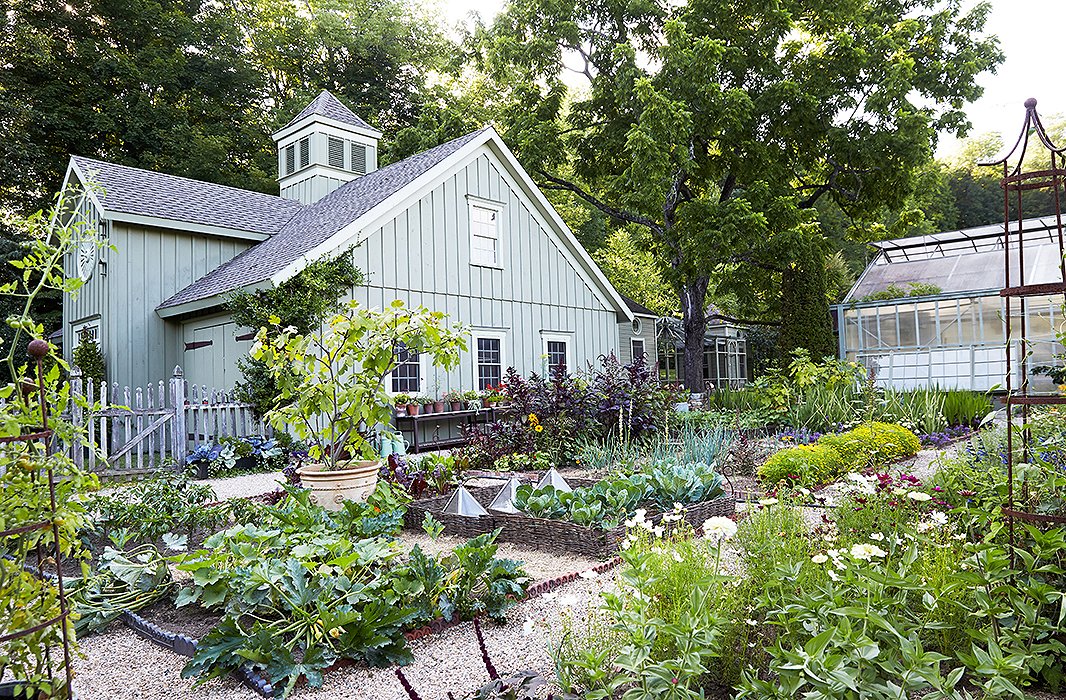
A board-and-batten barn, taking after 19th-century carriage houses, overlooks the vegetable and cutting gardens where “no two summers are quite alike” and snapdragons and zinnias, rosemary and thyme, and loads of dahlias overflow each year.
#6: Plant Flowers Purposefully
“I plant flowers in the colors I need for the house,” writes Bunny of her long-standing strategy with her cutting garden. “The tulips bloom first—apricot for the living room, dark red and black for the barn, white for the dining room. I’ll cut branches of lilac, quince, or apple blossom to give me the scale I need for a big arrangement in the hallway or the barn.”
#7: Experiment Lots
“I love my kitchen garden because it provides unbridled vitality,” says Bunny, who spends every day there tending to her flowers—and John to his vegetables. But more than anything, its perfect grounds for planting something new. “Anything goes in that little plot, where no two summers are quite alike. It’s my experimental lab, a utilitarian source of food, a cutting garden, a repository for the overflow of plants from other gardeners and garden, and a gathering spot for friends. Above all, it’s a working garden.”
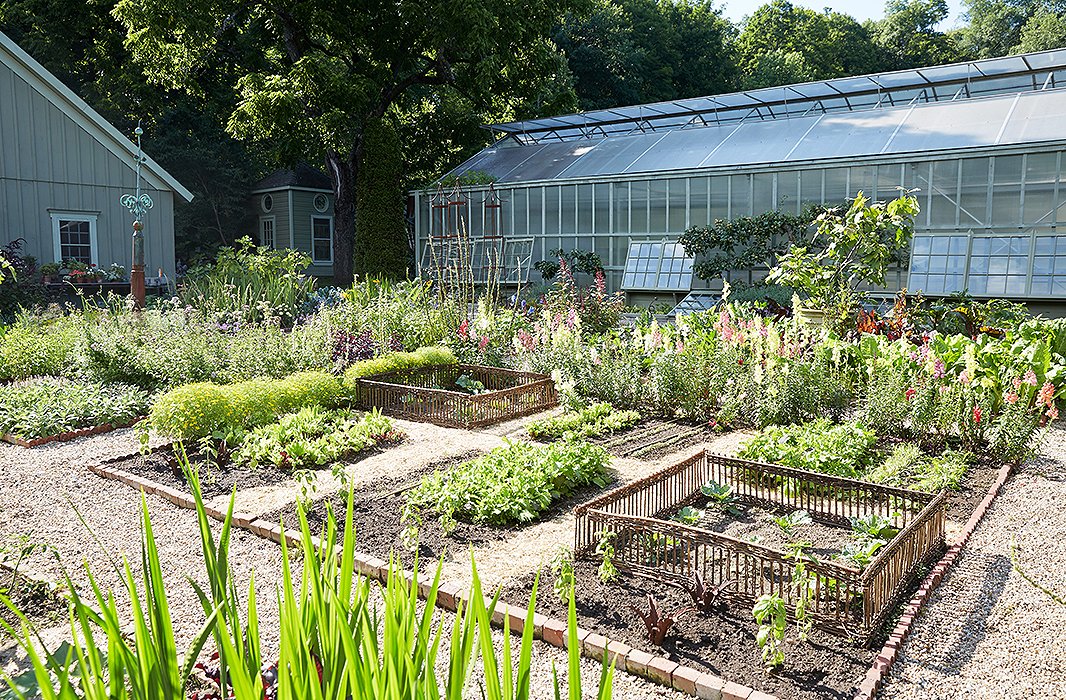
Every year, the vegetable garden leads to a tug-of-war between Bunny and John: He favors growing lots of vegetables for cooking, but Bunny always wins more plots for her flowers.
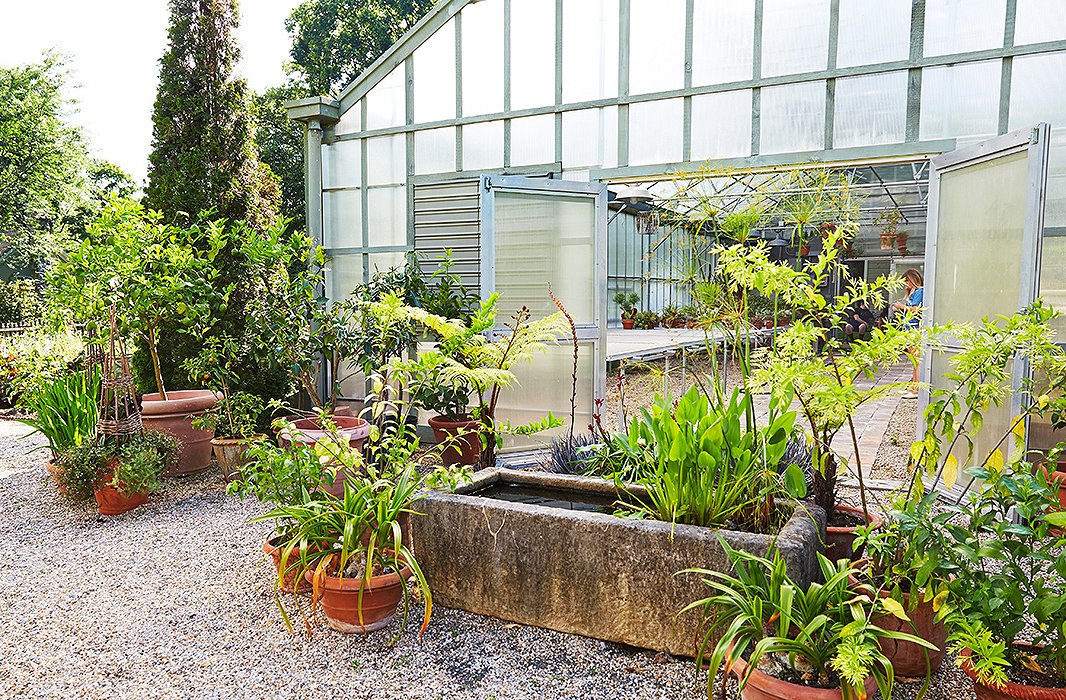
“For me, it is the soul of the place,” Bunny writes of the greenhouse at one end of the cutting garden. It’s an incubator (for newly purchased blooms), a laboratory (for growing new seeds), and an infirmary (for tending to withering plants).
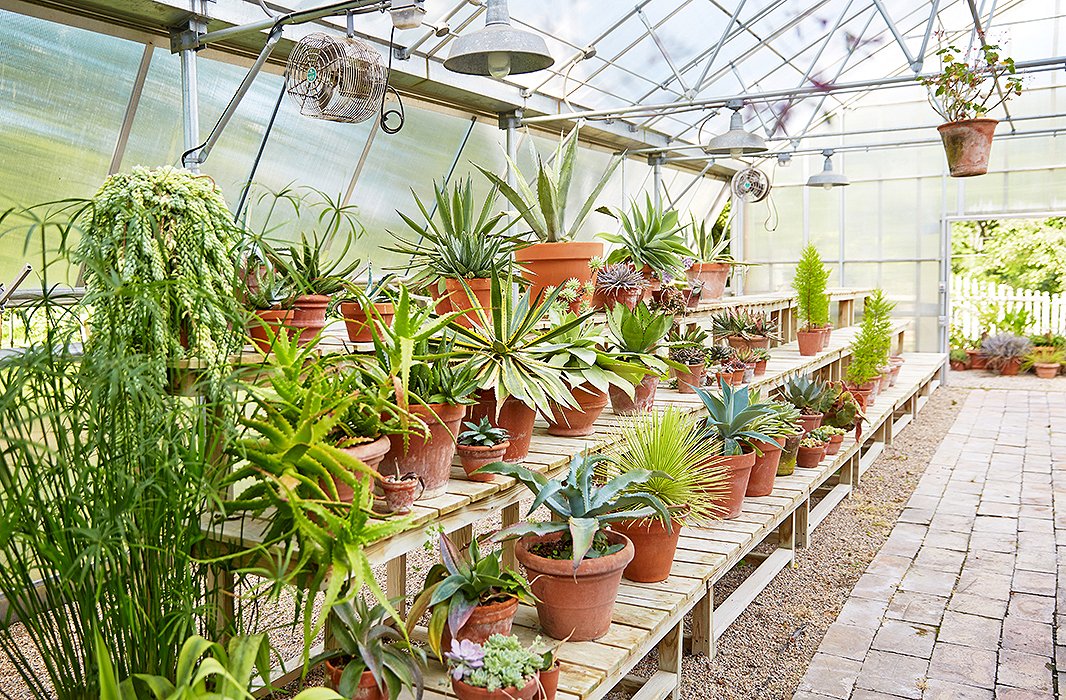
“I think of this as the intellectual side of the garden—a place to try something new, to get my hands dirty while I experiment,” writes Bunny in her book. She gleefully spends hours in the greenhouse year-round; even during the cold months it’s scented with jasmine and orange blossoms.
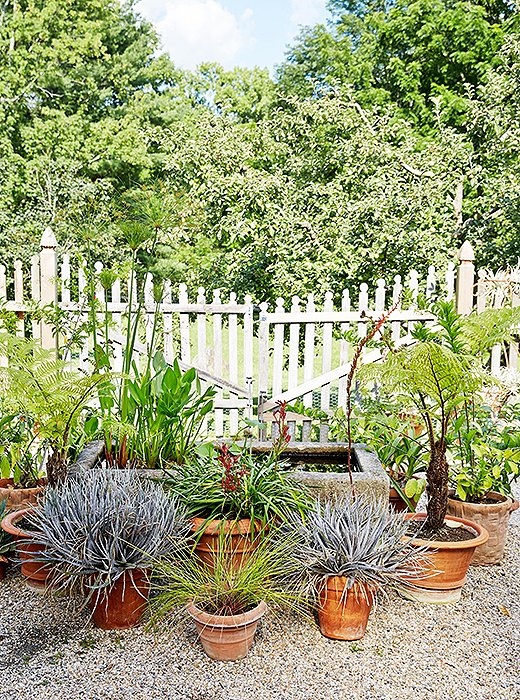
Potted plants come and go at Bunny’s greenhouse; some move into the garden once they grow big, others into the conservatory. But every new plant is brought to the greenhouse first.

It all starts in the greenhouse. Whenever I buy a new plant from the nursery, I bring it here first... I’ll start seedlings, not sure if they’re going to grow. Some don’t. But you’ll never have an interesting garden if you don’t take risks.

The idea for a colonnaded pool house came from a book on 18th-century garden follies that Bunny discovered in France. Built with salvaged tree trunks, the structure towers over the limestone pool and was made to evoke a classic Greek temple—a nod to all the Greek Revival architecture in Bunny and John’s Connecticut village.
#8: Always Let Nature Lead
“In such a natural place, I wanted everything to feel organic,” writes Bunny of her approach to the rusticated pool house, the idea of which came to her by way of a book on 18th-century garden follies. “I wanted the building to feel as if the trees had just waltzed out of the woodland and formed a Greek temple.” In came woven wicker, natural wood finishes, unglazed pots, and a repeat of pale green fabrics, which all merge effortlessly with the natural backdrop. The effect is one that complements rather than competes with the untamed surroundings.
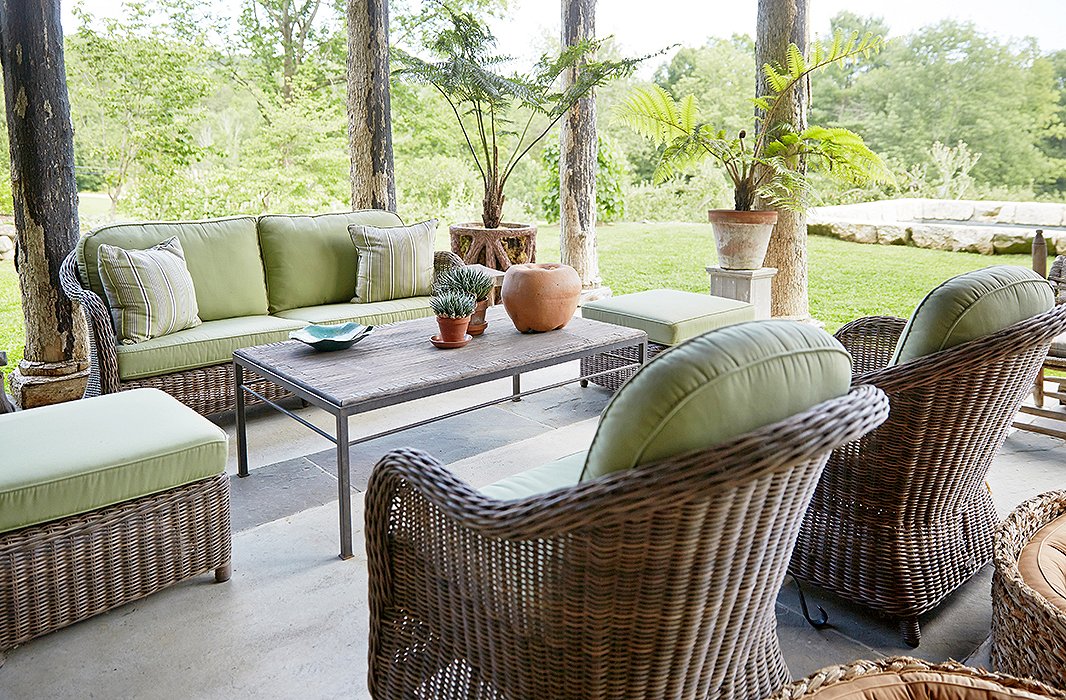
So as not to distract from the idyllic natural surroundings, Bunny maintained an organic feeling with unglazed pots, a bamboo coffee table, and pale-green-cushioned wicker lounge seating by the Belgium maker Vandecasteele Marc & Co.

Bunny hosts many summer lunches in the pool house at the 19th-century French farm table, which is grouped with wicker dining chairs by Vandecasteele Marc & Co.
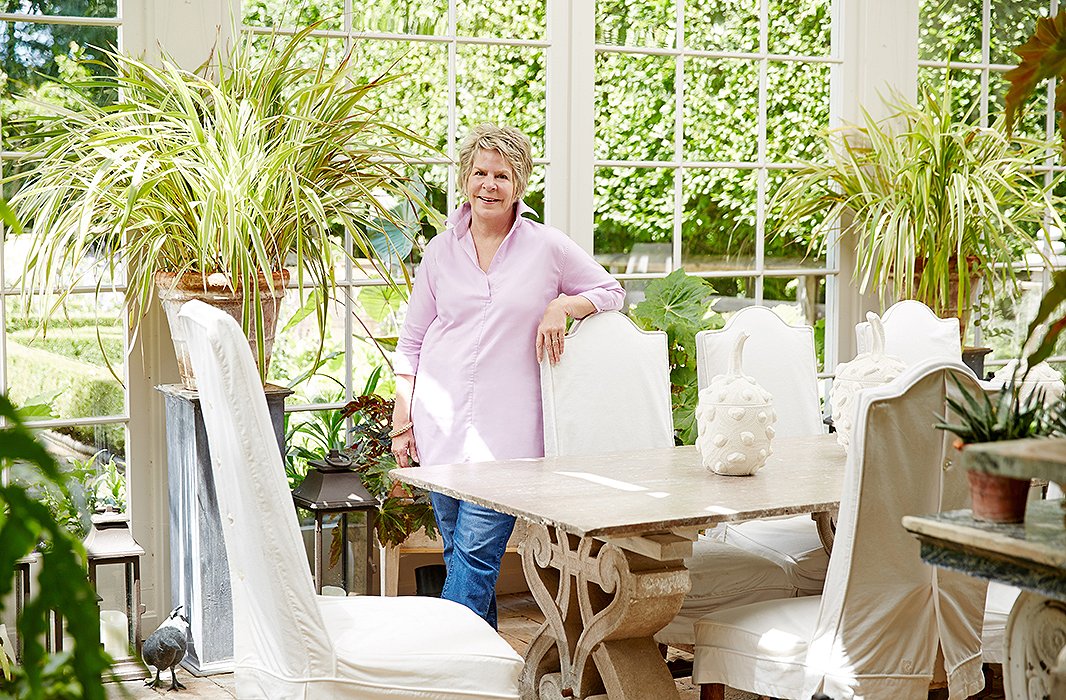
Before she purchased this country house, Bunny admits that she knew nothing about gardening. It was through speaking with every gardener she met and learning from them that she finally came to sow the first seeds of her own gardens.

In the 30-some years since I made my first little garden, it has been a constant source of pleasure to curl up with garden books, to visit public gardens around the world, to seek out-of-the-way private gardens, and to learn from the people who create and maintain both great and small ones.

“As I approached the white clapboard house hidden under towering old locusts and maples,” Bunny writes in her best-selling book An Affair with a House, “I felt that I was meant to be here.”
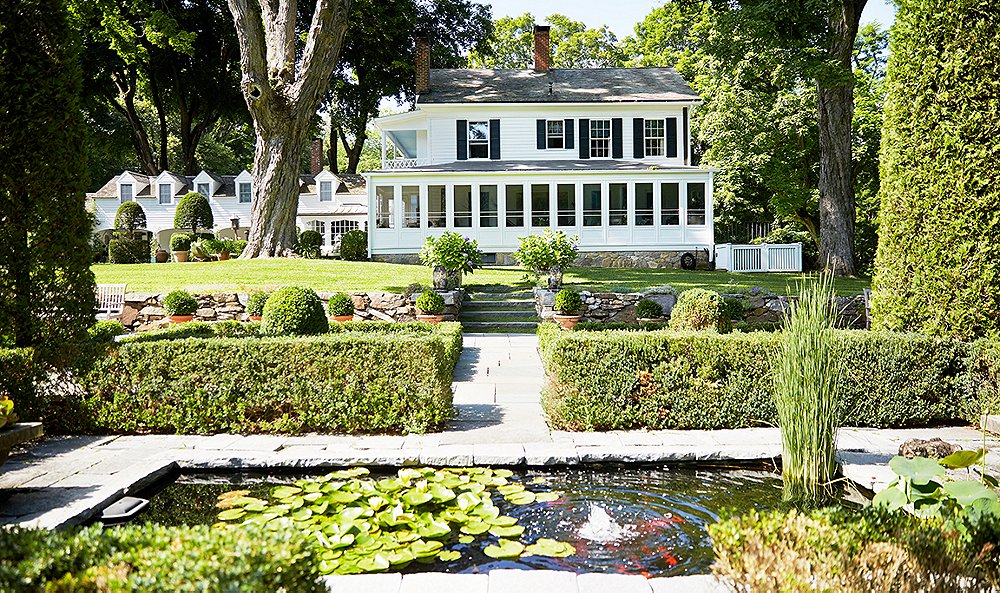
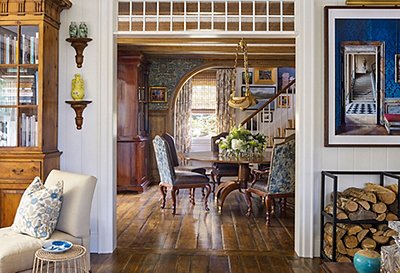
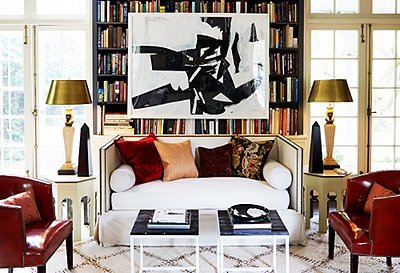
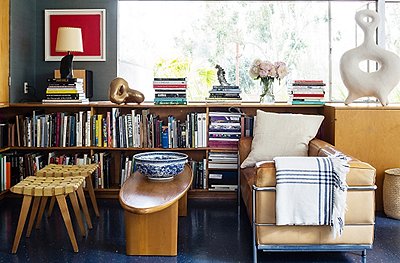
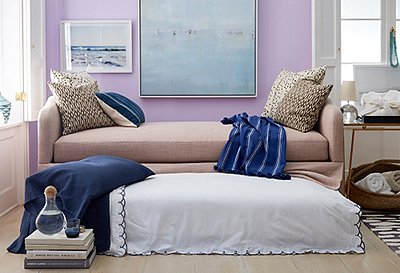

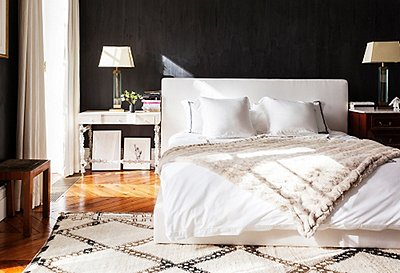
Join the Discussion